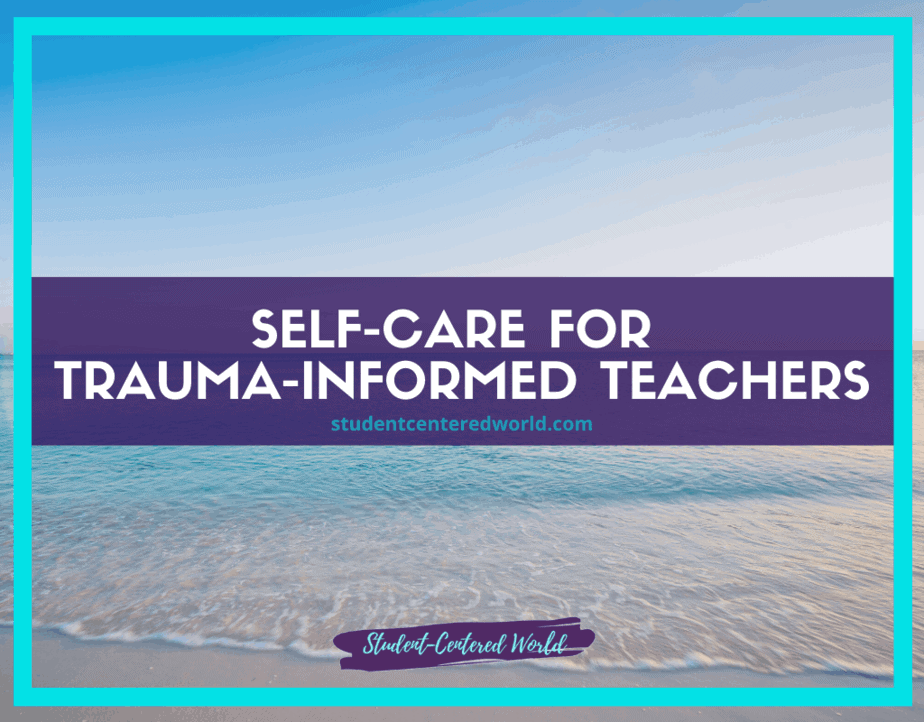Extended School Absence: 4 Steps for Schoolwork in a Unique Situation
I recently posted about what parents can do to keep their children on target with their education if there is an extended school absence. Today, I want to take a look at how teachers can plan for this.
I’ve spoken to so many educators who have had to scramble in preparing for the potential of a school absence that could last weeks.
Many of them are extremely overwhelmed.
There are so many factors to take into consideration when planning something of this magnitude.
- What resources do the students have at home?
- How can I make sure they are getting the right material?
- What if they all just copy answers or, worse, their parents do it for them?
- Will they even do any work I send?
The list can go on and on.
I’m here to tell you that there is an easy way to combat this and I am encouraging all teachers to take this into consideration as they are creating contingency plans in case of extended school absence.
You need to assign an inquiry-based project.

Inquiry-Based Project for Extended School Absence
I already know that so many of you froze as you read that. What does this mean and how can it possibly work? Let me explain:
An inquiry-based project allows the student the freedom to explore the content material from a lens that sparks interest within.
While we have obviously had a bulk of education in recent years that have had to worry about schools closing down or mass students learning virtually, but this concept is not only applicable to such dire times of extended school absence.
Sometimes students have long-term illnesses or will need to take extended leave due to traveling for a death in the family. Maybe we live in an area where weather causes school to close for extended periods of time or perhaps we actually want to take a different vision of what the flipped classroom could bring us. There are many different scenarios that look at school absence differently, but that all of this is applicable.
For this to work, you need to prepare for it as soon as you know that an extended school absence is a real possibility.
Step 1: Preparation
As early as possible, decide what particular standards you wish for your students to achieve during the school absence. This might be a bit tricky given we don’t know how long a school shutdown will definitively take, but you can give your best estimate as to what standards you would like them to master in a given time frame.
Then, you need to give them some baseline information. Show them a 5 minute long YouTube video or go through a brief overview in the form of a reading. Perhaps have conversations with each one individually, especially if they are younger.
Once they get the gist, they need to determine what they would like to know about that topic.
You can guide them with this (again, based on the standards you wish for them to master). Turn each standard into a question that you can ask in a group discussion. Give them time to search the internet for a bit or shuffle through the headings in those chapters in your textbook.
Give them time to digest the very basics of the content…then give them time to get curious.
Have each student write down what they’re curious about. Again, in the case of younger students, you may wish to have them record on SeeSaw or write it down for them.
Now here is where the magic happens.

Step 2: Determine the baseline requirements
Decide, in very general terms, what you want to make sure they can show you to prove they mastered those objectives and give them that criteria on a piece of paper.
If you have the opportunity and time is on your side, allow them to chat with their peers to come up with further questions or just discuss what their curiosities are.
Then, file them away. YOU keep them and distribute them when it is necessary.
The students will then be responsible for answering their own questions.
This is the cool part of this option. You know what you want them to master. They know what they need to prove, but now they have a question they came up with themselves that they want to find the answer to.
The best part? They can do this however they wish.

Step 3: Students have at it!
You don’t know what resources the students will have access to during this time. Maybe they’ll all have internet: great!
Maybe they won’t (in this case, make sure they all have a textbook or readings that you have given them that solidify the topic).
Then they can display their learning with whatever they have at their disposal.
Posterboard? Awesome!
Minecraft land? Sweet!
Sculpture out of PlayDough? Perfect!
iMovie trailer? Cool!
They can literally take whatever they have at their disposal to visually show what it is that they learned about the topic.
Depending on the level of your students, you can add a writing element or a FlipGrid recording. They could have to prepare to do a presentation explaining what they created when everyone returns.
Seriously though, the possibilities are endless and it takes the pressure off of you to come up with 30 days of individual assignments.
If you are teaching older, higher-level students, you can obviously add more to this in their “research” phase….DBQ’s or equations or EdPuzzles.
Give your students the reigns and see what they come up with. We know this whole situation is pretty unprecedented, so do something outside of the box.
As long as you can prove that they are meeting the standards laid before them, you’re golden.
The key to this is PREPARATION. It’s just not the type of preparation that will add hours of undue stress to your already hectic lifestyle. It’s the kind where you are certain that every student has a bit of curiosity and fully understands what they will be doing.
Make this situation less stressful for all parties involved…and give the kids something to be excited about while they’re stuck at home!
Step 4: It’s all about Communication
While there may be non-compliance or other headaches along the way, know that those instances are out of your control. The best you can do with a school absence like this is to make sure you communicate expectations as clearly as possible with every avenue where miscommunication could be a factor. This could be what is expected in terms of directions, completion, effort, etc.
Since there are multiple forms of communication, it is best to consider not only what you would say in an email to which you know they will receive the message by the end of the school day, but also how that could look on a telephone or in-person. This is especially true for online courses and the students who are partaking in the school absence.
It is also important to make sure you are clear about what would happen if they don’t complete the work on time (or at all). Think about how it will sound when you say “if” they don’t do something or if they fail to show up, etc. For example, “If this isn’t turned in on Wednesday, you’ll lose an entire day of credit for this assignment.”
Also, consider whether you should make it a point to address the student in person or via email. If it seems like there is the possibility for issues with honesty, taking responsibility for actions, etc., then emails are often best. That way, you have documentation that can be referenced later.
If you are concerned that the student will try to play you, then set up a reminder in your email so you don’t forget to follow up about the assignment. Set it for 24 hours after they are supposed to have turned it in or contacted you about lack of progress if this is an ongoing situation. It will help you keep track of your progress with each student.
If they are blatantly not doing the work, there are also some other avenues to consider with academic dishonesty policies. While many schools struggle with consistency here, there’s nothing saying you can’t create your own policy based on the school policy and make sure it is crystal clear to your students before the school absence.
For example, if the dishonesty policy covers missing assignments and it states that they will receive a zero for this assignment, then make sure you follow through by setting up similar reminders. If you want to push the issue further (depending on the severity of their actions), then set up a meeting with the student. Make sure that you have everything you need to support your claim (such as documentation about the school absence, missed opportunity costs, etc.), and make sure you are clear about how this will impact them in terms of future education goals.
School absences like this can be frustrating for both parties, but if they are handled correctly (with both compassion and firmness), then there are opportunities to learn important life lessons. These are valuable skills that can help them for the rest of their lives, so be sure you’re available to help them grow through this experience even if they aren’t doing all of the work right now.
If your student is already out, then it is best not to put any more pressure on them or punish them for the absences because they are already dealing with the consequences. Use this opportunity to connect, learn more about what is going on, and be an ear if they want to talk. If they do need support in terms of getting caught up or needing help connecting with other resources, then consider helping them find someone who can step into that role.
Stop Driving the Teacher Struggle Bus
Are you struggling with student engagement, apathy, or keeping your class on track?
💫💫 There’s hope! 💫💫
Join my free teacher workshop “Choosing Choice” and in just 60 minutes, you’ll craft a practical plan to revitalize your teaching. Discover the magic of student choice in boosting engagement, gain quick implementation ideas, and explore strategies for year-long success.
Unlike overwhelming workshops, my approach guides you in real-time, providing more classroom options, reducing stress, and giving you more personal time.
Plus, you’ll earn a 1-hour professional development certificate and have 7 days of access.
Don’t miss this chance to transform your teaching; click below to secure your spot now!






2 Comments
Marc Ford
Great advice, we need more of this spread around the world!
I teach in Hong kong and we are already in the middle of a 3 month schools closure so preparing for it before it happens would be so much better.
Now we are firefighting as we go along.
If you would like to guest publish this i run a website and i would be pleased to host it and back link it for you.
Jenn
It’s definitely all about preparation, but the RIGHT preparation. Stressing ourselves out is not the answer.